What are normal levels of alt and ast. ALT and AST Levels: Understanding Normal Ranges, High and Low Results, Symptoms, and Causes
What are the normal levels of ALT and AST. How do high or low results affect your health. What symptoms might indicate abnormal liver enzyme levels. What causes elevated ALT and AST.
Understanding ALT and AST: Key Liver Enzymes
Alanine Aminotransferase (ALT) and Aspartate Aminotransferase (AST) are crucial enzymes primarily found in the liver. These enzymes play a vital role in amino acid metabolism and are often used as indicators of liver health. When liver cells are damaged, these enzymes leak into the bloodstream, resulting in elevated levels that can be detected through blood tests.
What is ALT?
ALT, or Alanine Aminotransferase, is an enzyme that catalyzes the transfer of an amino group from alanine to α-ketoglutarate, producing pyruvate and glutamate. It is predominantly found in the liver and kidneys, with smaller amounts present in the heart and skeletal muscles. ALT is considered more specific to liver damage compared to AST.

What is AST?
AST, or Aspartate Aminotransferase, is another enzyme involved in amino acid metabolism. While it is also present in the liver, it can be found in significant quantities in other organs such as the heart, muscles, and kidneys. Due to its wider distribution, elevated AST levels are less specific to liver damage compared to ALT.
Normal Levels of ALT and AST
The normal range for ALT and AST can vary slightly depending on the laboratory and the specific testing method used. However, generally accepted ranges are:
- ALT: 14 – 63 IU/L (International Units per Liter)
- AST: 15 – 41 IU/L (International Units per Liter)
It’s important to note that these ranges can differ based on factors such as age, gender, and individual health status. For instance, in healthy children, plasma ALT activity is typically lower than AST until the age of 15 to 20 years. After this, ALT tends to be higher than AST until around age 60, when the activities become roughly equal.
Factors Affecting ALT and AST Levels
Several factors can influence ALT and AST levels, even in healthy individuals:

- Time of day: ALT levels can fluctuate up to 45% during a single day, with highest levels in the afternoon and lowest at night.
- Day-to-day variation: ALT levels can vary 10 to 30% from one day to the next in healthy individuals.
- Body Mass Index (BMI): A high BMI can increase ALT levels by 40 to 50%.
- Vitamin B6 status: Both ALT and AST require vitamin B6 as a catalytic cofactor. Deficiency in this vitamin can affect enzyme activity.
High ALT and AST Levels: Causes and Implications
Elevated levels of ALT and AST are often indicative of liver damage or disease. The extent of elevation and the ratio between AST and ALT can provide valuable insights into the underlying condition.
Common Causes of Elevated ALT and AST
- Viral hepatitis
- Alcoholic liver disease
- Non-alcoholic fatty liver disease (NAFLD)
- Drug-induced liver injury
- Ischemic liver injury
- Autoimmune hepatitis
- Hemochromatosis
- Wilson’s disease
Interpreting ALT and AST Elevations
The pattern of ALT and AST elevation can provide clues about the underlying liver condition:

- Viral hepatitis: ALT is typically 10-40 times the upper limit of normal (ULN), with an AST:ALT ratio <1.
- Alcoholic hepatitis: ALT is usually 2-8 times ULN, with an AST:ALT ratio >2.
- Toxic or ischemic injury: ALT can be >40 times ULN, with AST initially higher than ALT.
In cases of extreme elevation (ALT >3000 U/L), 90% are due to toxic or ischemic injury. It’s crucial to note that peak ALT levels do not necessarily correlate with prognosis, and in some severe cases, decreasing ALT may actually indicate a lack of viable hepatocytes rather than recovery.
Low ALT and AST Levels: What Do They Mean?
While much attention is given to elevated liver enzymes, low levels of ALT and AST can also be significant. Low levels are less common and may indicate:
- Vitamin B6 deficiency
- Chronic kidney disease
- Severe liver damage (in advanced stages where few functional liver cells remain)
Low levels are generally less concerning than high levels but should still be evaluated in the context of overall health and other laboratory findings.
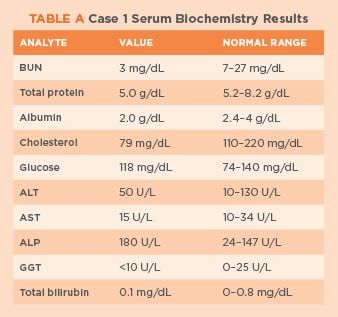
The AST:ALT Ratio: A Diagnostic Tool
The ratio of AST to ALT in plasma can be a valuable diagnostic tool for certain liver conditions. In most liver diseases, ALT elevation is greater than AST due to ALT’s longer half-life in circulation (47 ± 10 hours). However, there are notable exceptions:
- Alcoholic hepatitis
- Cirrhosis
- Wilson’s disease
- Very early stages of liver damage
In these conditions, the AST:ALT ratio is typically greater than 2. This ratio can help differentiate alcoholic liver disease from other forms of liver injury, where the ratio is usually less than 1.
Symptoms Associated with Abnormal ALT and AST Levels
Elevated ALT and AST levels themselves do not cause symptoms. However, the underlying liver conditions causing these elevations may present with various symptoms:
- Fatigue
- Jaundice (yellowing of skin and eyes)
- Abdominal pain or swelling
- Nausea and vomiting
- Loss of appetite
- Dark urine
- Pale stools
- Itchy skin
It’s important to note that many liver conditions, especially in their early stages, may be asymptomatic. This is why routine liver function tests, including ALT and AST measurements, are crucial for early detection and management of liver diseases.

Diagnosis and Monitoring Using ALT and AST
ALT and AST tests are part of a comprehensive liver function panel used to diagnose and monitor liver diseases. Here’s how these enzymes are utilized in clinical practice:
Diagnosis
ALT is considered the best single indicator of hepatocyte injury. A level of 300 U/L is often used as a discriminant value for recognizing acute hepatic injury. However, diagnosis typically involves more than just ALT and AST levels. Other tests may include:
- Alkaline phosphatase (ALP)
- Gamma-glutamyl transferase (GGT)
- Bilirubin
- Albumin
- Prothrombin time
Monitoring
ALT and AST levels are also valuable for monitoring the progression of liver diseases and the effectiveness of treatments. For instance:
- In viral hepatitis, ALT increases before and peaks near the onset of jaundice. It then falls slowly, at an average of 10% per day, remaining elevated for 27 ± 16 days.
- In chronic hepatitis C, ALT levels may fluctuate between normal and abnormal. Interestingly, 15 to 50% of patients with chronic hepatitis C have persistently normal ALT levels.
- In cirrhosis without ongoing liver injury, ALT and AST levels may normalize, despite the presence of advanced liver disease.
Treatment Approaches for Abnormal ALT and AST Levels
Treatment for abnormal ALT and AST levels focuses on addressing the underlying cause of liver dysfunction. Some general approaches include:

Lifestyle Modifications
- Abstaining from alcohol
- Maintaining a healthy weight
- Eating a balanced, liver-friendly diet
- Regular exercise
- Avoiding hepatotoxic substances
Medical Interventions
- Antiviral treatments for viral hepatitis
- Immunosuppressants for autoimmune hepatitis
- Chelation therapy for Wilson’s disease
- Phlebotomy for hemochromatosis
- Medications to manage complications of liver disease
In some cases, such as drug-induced liver injury, discontinuing the offending medication under medical supervision may be necessary. For advanced liver disease, liver transplantation might be considered.
Prevention and Maintenance of Healthy ALT and AST Levels
Maintaining healthy ALT and AST levels is primarily achieved through liver health promotion. Here are some strategies:
- Limit alcohol consumption: Excessive alcohol intake is a leading cause of liver damage.
- Maintain a healthy weight: Obesity is closely linked to non-alcoholic fatty liver disease.
- Exercise regularly: Physical activity helps maintain a healthy weight and promotes liver health.
- Eat a balanced diet: A diet rich in fruits, vegetables, whole grains, and lean proteins supports liver function.
- Avoid unnecessary medications: Some medications can cause liver damage when used long-term or in high doses.
- Practice safe sex and avoid sharing needles: This reduces the risk of contracting hepatitis B and C.
- Get vaccinated: Hepatitis A and B vaccines can prevent these forms of viral hepatitis.
- Avoid exposure to toxins: Limit contact with chemicals like cleaning products and insecticides.
Regular check-ups and liver function tests can help detect any abnormalities early, allowing for timely intervention and management.

Future Directions in ALT and AST Research
Research into ALT and AST continues to evolve, with several exciting areas of focus:
Improved Standardization
The International Federation of Clinical Chemistry (IFCC) has recommended that laboratories add excess pyridoxal-5′-phosphate (P5P) to their enzyme reagents. This ensures accurate measurement of enzyme activity independent of vitamin B6 status. However, less than 50% of ALT assays currently incorporate exogenous P5P. Future efforts may focus on increasing this standardization.
Novel Biomarkers
While ALT and AST remain valuable indicators of liver health, researchers are exploring new biomarkers that may offer additional insights. These could provide more specific information about the type and extent of liver damage, potentially leading to earlier and more accurate diagnoses.
Personalized Reference Ranges
Given the variability in ALT and AST levels based on factors like age, gender, and BMI, there’s growing interest in developing personalized reference ranges. This could lead to more accurate interpretations of test results and better-tailored treatment approaches.

Non-Invasive Imaging Techniques
Advancements in imaging technologies may complement ALT and AST tests in the future. Techniques like elastography, which measures liver stiffness, could provide additional information about liver health without the need for invasive procedures.
In conclusion, understanding ALT and AST levels is crucial for assessing and maintaining liver health. While elevated levels often indicate liver damage, it’s important to interpret these results in the context of other clinical findings and individual patient factors. Regular monitoring, lifestyle modifications, and appropriate medical interventions when necessary can help manage liver health effectively. As research progresses, we can expect even more refined and personalized approaches to liver health assessment and management.
Alanine Aminotransferase or ALT is increased in liver disease
Alanine Aminotransferase (ALT)
Alanine aminotransferase is an enzyme involved in the transfer of an amino group from the amino acid, alanine, to alpha-ketoglutaric acid to produce glutamate and pyruvate. ALT is located primarily in liver and kidney, with lesser amounts in heart and skeletal muscle. Increased ALT activity is more specific for liver damage than increased aspartate aminotransferase (AST) activity. ALT is seldom increased in patients with heart or muscle disease in the absence of liver involvement. In healthy children, plasma ALT activity is lower than AST until 15 to 20 years of age. Thereafter, plasma ALT activity tends to be higher than AST activity until age 60, when the activities become roughly equal. The half-life of ALT in the circulation is 47 +/- 10 hours.
ALT activity in the liver is 3000 fold higher than in serum. Measurement of serum ALT activity is a good indicator of hepatocyte injury.
|
Disease
|
Peak ALTx ULN
|
AST:ALTRatio
|
Peak Bilirubin
|
ProtimeProlongation
|
|
Viral hepatitis
|
10 – 40
|
<1
|
<15
|
<3
|
|
Alcoholic hepatitis
|
2 – 8
|
>2
|
<15
|
1 – 3
|
|
Toxic injury
|
>40
|
>1 early
|
<5
|
>5 transient
|
|
Ischemic injury
|
>40
|
>1 early
|
<5
|
>5 transient
|
X ULN = times upper limit of normal, Protime prolongation is number of seconds above ULN
- The best ALT discriminant value for recognizing acute hepatic injury is 300 U/L.

- ALT increases before & peak near onset of jaundice in viral hepatitis. Activity falls slowly, an avery of 10% per day. ALT remains elevated 27 +/- 16 days.
- ALT levels fluctuate between normal and abnormal in hepatitis C. 15 to 50% of patients with chronic hepatitis C have persistently normal ALT.
- In uncomplicated alcoholic hepatitis, ALT values are almost never >10 times the upper reference limit.
- Extremely elevated ALT levels are common in toxic hepatitis and hepatic ischemia secondary to circulatory collapse and heatstroke. 90% of cases with ALT >3000 U/L are due to toxic or ischemic injury. AST is usually higher than ALT and both enzymes peak in the first 24 hours after admission. After peaking, both levels fall rapidly; AST faster than ALT.
- Peak ALT levels bear no relationship to prognosis and may fall with worsening of the patients condition. In fulminant hepatic necrosis, decreasing ALT may signify a paucity of viable hepatocytes rather than recovery.

Patients with cirrhosis, non-alcoholic steatohepatitis, cholestatic liver disease, fatty liver and hepatic neoplasm typically have slightly raised serum ALT levels (<120 IU/L). Patients with cirrhosis seldom have ALT levels higher than two times normal. Cirrhotic patients without ongoing liver injury the values may have normal values.
Other causes of elevated ALT include hemochromatosis, Wilson disease, autoimmune hepatitis, primary biliary cirrhosis, sclerosing cholangitis and alpha-1 antitrypsin deficiency. The medications most commonly associated with elevated ALT are sulfonamides, statins and isoniazid.
The ratio of AST to ALT in plasma may help in the diagnosis of some liver diseases. Most liver diseases are associated with greater elevation of ALT than AST because of the longer circulating half-life of ALT. Exceptions include alcoholic hepatitis, cirrhosis, Wilson disease and very early liver damage. In these disorders the AST to ALT ratio is generally greater than 2.
Both AST and ALT require vitamin B6 (pyridoxal-5′-phosphate, P5P) as a catalytic cofactor. Pyridoxal-5’-phosphate deficiency is common in alcoholic liver disease and renal failure. In an attempt to standardize aminotransferase assays, the International Federation of Clinical Chemistry (IFCC) recommended that laboratories add excess P5P to their enzyme reagents so that these assay accurately measure enzyme activity independently of vitamin B6 status. Unfortunately, less than 50% of ALT assays incorporate exogenous 5P5.
In healthy individuals, ALT levels can vary 10 to 30% from one day to the next. ALT levels can fluctuate 45% during a single day, with highest levels occurring in the afternoon and lowest levels at night. A high body mass index can increase ALT levels by 40 to 50%.
Reference range is 14 – 63 IU/L.
Specimen requirement is one SST tube of blood. ALT is stable at room temperature for 3 days and refrigerated for 3 weeks. Hemolysis causes moderate increases in ALT levels.
Diagnosis of liver cancer | Canadian Cancer Society
Diagnosis is the process of finding out the cause of a health problem. Usually, diagnosing liver cancer begins when a routine test suggests a problem with the liver. Your doctor will ask you about any symptoms you have and do a physical exam. Based on this information, your doctor may refer you to a specialist or order tests to check for liver cancer or other health problems.
The process of diagnosis may seem long and frustrating. It’s normal to worry, but try to remember that other health conditions can cause similar symptoms as liver cancer. It’s important for the healthcare team to rule out other reasons for a health problem before making a diagnosis of liver cancer.
The following tests are usually used to rule out or diagnose liver cancer. Many of the same tests used to diagnose cancer are used to find out the stage (how far the cancer has spread). Your doctor may also order other tests to check your general health and to help plan your treatment.
Your health history is a record of your symptoms, risks and all the medical events
and problems you have had in the past. Your doctor will ask
questions about your history of:
- symptoms that suggest liver cancer
- scarring of the liver (called cirrhosis)
- infection with hepatitis B virus (HBV) or hepatitis C virus (HCV)
- drinking large amounts of alcohol
- smoking tobacco
Your doctor may also ask about a family history of:
- liver cancer
- risks for liver cancer
- other cancers
A physical exam allows your doctor to look for any signs of liver cancer. During a
physical exam, your doctor may:
- feel the abdomen to find out if any organs are larger than normal or if there is a
buildup of fluid (called ascites) - look at the eyes or skin for yellowing (called jaundice)
- check for swelling in the legs and feet from a buildup of fluid (called
edema)
Find out more about physical exams.
A complete blood count (CBC) measures the number and quality of white blood cells, red blood cells and
platelets. A CBC is done to get basic information about your general health.
Find out more about a complete blood count (CBC).
Blood chemistry tests measure certain chemicals in the blood. They show how well certain organs are working and can help find abnormalities. Blood chemistry tests used to diagnose liver cancer include the following.
Liver function tests (also called a liver panel) are a group of blood chemistry tests
that are often ordered together. While they do not diagnose liver cancer, they can tell
the doctor that there may be a problem with the liver.
Albumin is a protein made by the liver. Low levels of albumin suggest that the liver is damaged.
Bilirubin is made when old red blood cells (RBCs) break down. The liver absorbs and uses bilirubin. A high level of bilirubin may mean that the liver isn’t working properly. A buildup of bilirubin in the body can cause jaundice.
A buildup of bilirubin in the body can cause jaundice.
Prothrombin time (PT) is the amount of time it takes blood to clot. The liver makes proteins that the blood needs to clot (called coagulation factors). Doctors use bleeding and blood-clotting factor tests to see how well the body can clot blood. Slower clotting time may be caused by liver damage or disease.
Alkaline phosphatase (ALP) is an enzyme found in the liver and other body tissues. A high level of ALP may be a sign of liver damage.
Aspartate aminotransferase (AST) is an enzyme found in liver and heart cells. When liver or heart cells are damaged, they release AST into the blood. A high level of AST in the blood may be a sign of liver damage or disease.
Alanine aminotransferase (ALT) is an enzyme found in the liver and kidneys. A high level of ALT in the blood is often found before symptoms of liver damage, such as jaundice, develop.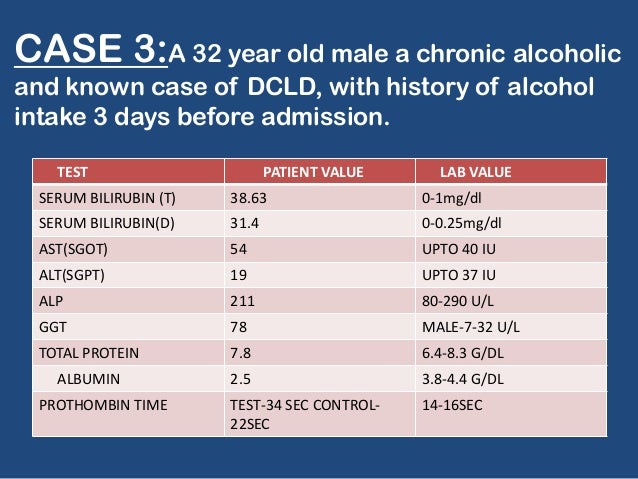
Find out more about blood chemistry tests.
An ultrasound uses high-frequency sound waves to make images of parts of the body. It is used to see if the liver is larger than normal. It can also be used to see if a growth in the liver is solid or filled with fluid (like a cyst).
Find out more about ultrasound.
A computed tomography (CT) scan uses special x-ray equipment to make 3D and cross-sectional images of organs, tissues, bones and blood vessels inside the body. A computer turns the images into detailed pictures.
To diagnose liver cancer, a CT scan is done 4 times. This is called a 4-phase, or multiphase, CT scan. A CT scan is first done without any contrast medium. The next 3 scans are done after contrast medium is injected into a vein. The way the contrast medium flows through the liver can tell doctors if a tumour in the liver is cancerous. When doctors identify liver cancer with a CT scan, they don’t need to do a liver biopsy.
Doctors also use a CT scan to get information about the tumour’s size, shape and location.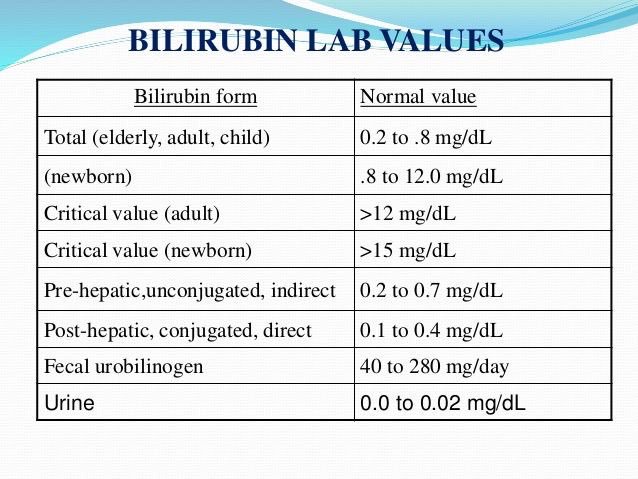 They use a CT scan to look for signs that the cancer has spread to nearby lymph nodes, tissues or organs. A CT scan also helps the doctor decide if the liver tumour can be removed by surgery.
They use a CT scan to look for signs that the cancer has spread to nearby lymph nodes, tissues or organs. A CT scan also helps the doctor decide if the liver tumour can be removed by surgery.
Find out more about CT scans.
Magnetic resonance imaging (MRI) uses powerful magnetic forces and radiofrequency waves to make cross-sectional images of organs, tissues, bones and blood vessels. A computer turns the images into 3D pictures.
An MRI may be used to look for signs that liver cancer has spread to nearby lymph nodes, tissues or organs.
Find out more about MRIs.
During a biopsy, the doctor removes tissues or cells from the body so they can be tested
in a lab. A report from a pathologist will show whether or not cancer cells are found
in the sample.
In most cases, doctors use a CT scan to diagnose liver cancer. If they
can’t confirm that there is a tumour in the liver based on the imaging test results,
doctors may do a liver biopsy.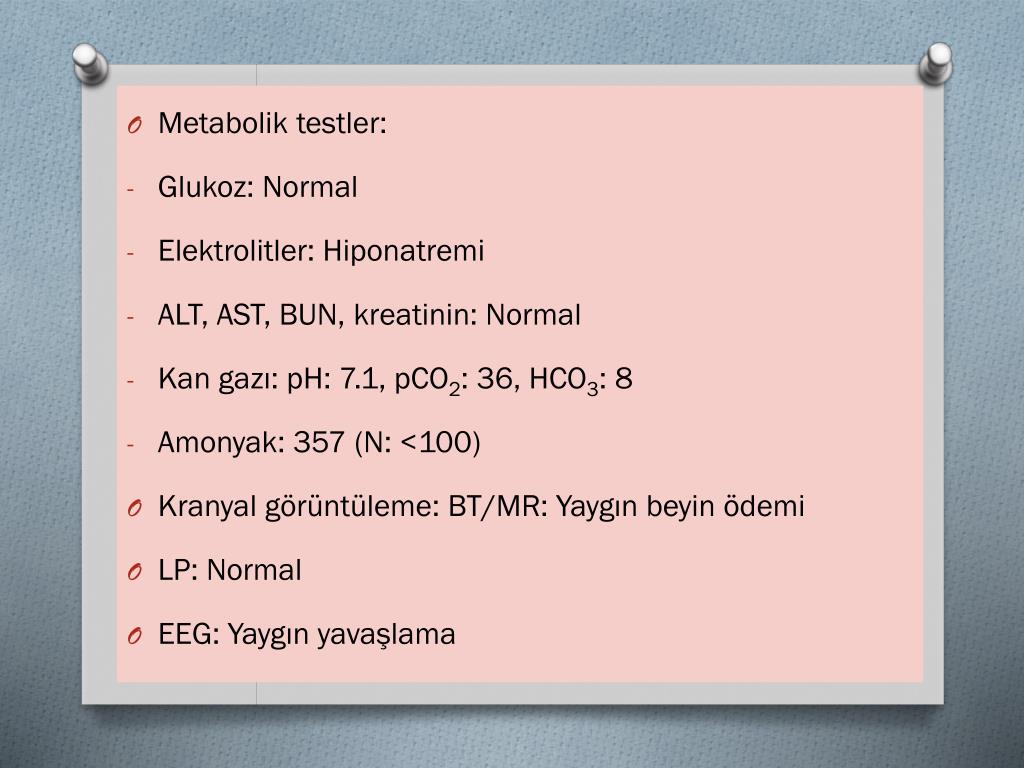
A core needle biopsy uses a large, hollow cutting needle to remove a cylinder-shaped
sample (core) from a tumour. It is the most commonly used biopsy for
liver cancer because it gives enough tissue for doctors to make a diagnosis.
Find out more about biopsies.
If doctors think someone has liver cancer, they will order a blood test to check for hepatitis viruses. Chronic infection with hepatitis B virus (HBV), hepatitis C virus (HCV) or both increases the risk of developing liver cancer.
Find out more about hepatitis viruses.
An x-ray uses small doses of radiation to make an image of parts of the body on film. It is used to see if liver cancer has spread to the lungs.
Find out more about x-rays.
Tumour markers are substances found in the blood, tissues or fluids removed from the body. An abnormal amount of a tumour marker may mean that a person has liver cancer.
Tumour marker tests are generally used to check your response to cancer treatment. They can also be used to diagnose liver cancer.
They can also be used to diagnose liver cancer.
In the past, alpha-fetoprotein (AFP) was the tumour marker used for liver cancer. Recent research shows that AFP may also be higher than normal in people who have other types of cancer, including intrahepatic bile duct cancer. Because the test does not specifically identify liver cancer, doctors no longer recommend it as a diagnostic test for liver cancer.
Find about more about tumour markers.
To make the decisions that are right for you, ask your healthcare
team questions about diagnosis.
Kelly W Burak, MD, FRCPC, MSc(Epid)
Vincent Tam, BSc(Hon), MD, FRCPC
American Cancer Society
. Tests for Liver Cancer
. 2019
2019
: https://www.cancer.org/.American Society of Clinical Oncology (ASCO)
. Cancer.net: Liver Cancer: Diagnosis
. 2021
: https://www.cancer.net/.Burak KW, Sherman M. Hepatocellular carcinoma: consensus, controversies and future directions: a report from the Canadian Association for the Study of the Liver hepatocellular carcinoma meeting. Canadian Journal of Gastroenterology and Hepatology. 2015: 29(4):178–184. https://www.ncbi.nlm.nih.gov/pmc/articles/PMC4444026/.
Fong Y, Dupuy DE, Feng M, Abou-Alfa G. Cancer of the liver. DeVita VT Jr., Lawrence TS, Rosenberg SA, eds.. DeVita, Hellman, and Rosenberg’s Cancer: Principles & Practice of Oncology.
 11th ed. Philadelphia, PA: Wolters Kluwer; 2019: 57:844–865.
11th ed. Philadelphia, PA: Wolters Kluwer; 2019: 57:844–865.Heimback JK, Kulik LM, Finn RS, et al
. AASLD guidelines for the treatment of hepatocellular carcinoma
. Hepatology
. 2017
: 67(1):358–380
.National Comprehensive Cancer Network. NCCN Clinical Practice Guidelines in Oncology: Hepatobiliary Cancers (Version 3.2021). 2021.
The main activity of BaseRelief is landscaping and landscaping, landscape design of the site. An impeccably designed garden will become an integral part of your cottage or country house in Moscow or the Moscow region. Landscaping of your dacha or estate will be done by real experts in their field: landscape designers, decorators, builders. The art of competently ennobling the surrounding area is the task of a self-respecting designer. It should be noted that landscaping and landscaping is a complex, difficult, multifaceted process. But we are ready to cope with any task, because: we know a lot about the culture of the landscape, we are ready to take on the improvement of your territory, we creatively approach the landscape design of the Garden, turn its shortcomings into undoubted advantages. Designing is the very first and fairly extensive scope of work on the improvement of a site of any size and purpose. Experts from Basic Relief will help you decide which design steps are required. So, for example, project documentation is required for any landscaping object, and geodetic survey in selected cases. Landscaping of a site of a manor or country cottage, embodied by high-class designers of the BaseRelief company, allows you to create a unique atmosphere on the territory of any destination. A country garden or a personal plot, the space around administrative, medical, educational institutions will acquire a unique style with the help of landscape design. Territory landscaping – comprehensive work that allows you to turn a territory of any size and purpose into a cozy, neat and beautiful. The construction of a drainage system will remove excess moisture, paving paths will make it convenient to move around the site, and decorative and technical lighting will become an important element of comfort and style. Gardening has a huge impact on the psychological, physical and emotional well-being of a person. Even the most dull city landscapes can turn into oases of beauty, tranquility, grace and unity with nature with the right landscaping. The most accessible and natural stage of landscaping is the arrangement of the lawn. Modern techniques and materials make it possible to create a lawn of high functional and aesthetic quality that retains its value for many months. The effective basis of any garden or park, of course, are large-sized. Formed trees and shrubs of different species create a core for landscaping a site of any size. Landing large-sized plants is a serious and responsible task that requires deep knowledge. The variety of small architectural forms is so rich that skillfully selected elements – bridges and pavilions, pergolas and rotundas, gazebos and arches, rock gardens and fountains – are able to embody an absolutely unique project and emphasize the refined taste of the owner. Basic Relief gardeners provide a full range of services for the care and maintenance of plots of any size. We have all the necessary knowledge and skills, which allows us to take care of landscape projects of different styles and levels of complexity, including ponds, large plantings of large fruit trees, graceful rock gardens, etc. Photos of our landscape design workHome landscaping services Our specialists carry out landscape design projects of any level of complexity – both private (country house, garden plot, cottage, dacha, estate) and urban projects (landscaping of streets, squares, parks, squares, etc. |
Increase in the level of ALT and AST in the blood
ALT and AST: what is it? What does an increase in the level of ALT and AST in the blood mean? How to take the analysis?
Reviews Increased blood ALT and AST levels
ALT and AST: what is it? What does an increase in the level of ALT and AST in the blood mean? How to take the analysis?
ALT (alanine aminotransferase) and AST (aspartate aminotransferase) are special proteins (enzymes) that are contained inside the cells of the body and are involved in the metabolism of amino acids (substances that make up proteins). These enzymes are found only in the cells of various organs and enter the blood when damage or destruction of cells (diseases, injuries). An elevated level of ALT and AST indicates the presence of a disease of one or another organ (most often hepatitis, pancreatitis, heart attack).
The content of ALT and AST in different organs is not the same, therefore, an increase in one of these enzymes may indicate a disease of a particular organ.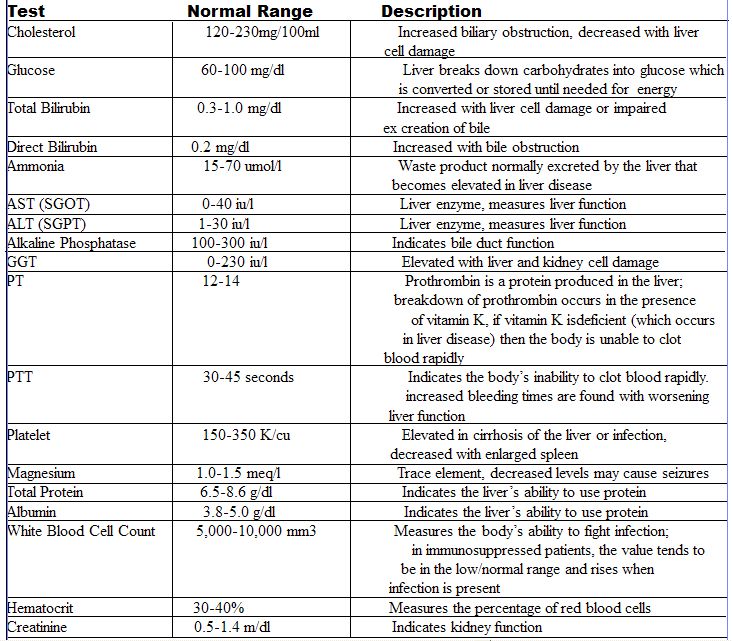
ALT (ALAT, alanine aminotransferase) is an enzyme found mainly in the cells of the liver, kidneys, muscles, heart (myocardium – heart muscle) and pancreas. When they are damaged, a large amount of ALT comes out of the destroyed cells, which leads to an increase in its level in the blood.
AST (AST, aspartate aminotransferase) is an enzyme that is also found in the cells of the heart (in the myocardium), liver, muscles, nerve tissues, and to a lesser extent in the lungs, kidneys, pancreas. Damage to the above organs leads to an increase in the level of AST in the blood.
What are the norms for the content of ALT and AST in the blood?
ALT and AST levels are determined using a biochemical blood test. In order to obtain reliable results of the study, it is recommended to donate blood for biochemical analysis in the morning, on an empty stomach (it is recommended not to eat anything for at least 8 hours before taking the analysis). Blood is usually taken from a vein. Normally, the blood levels of ALT and AST in men and women are not the same. In women, this level normally does not exceed 31 U/l. In men, normal ALT does not exceed 45 U / l, and AST 47 U / l.
Normally, the blood levels of ALT and AST in men and women are not the same. In women, this level normally does not exceed 31 U/l. In men, normal ALT does not exceed 45 U / l, and AST 47 U / l.
In children, the level of ALT and AST varies depending on age, but should not exceed for ALT – 50 U / l, for AST – from birth to 5 days up to 140 U / l, up to 9years – up to 55 IU / l.
It is important to take into account the fact that the norms and reference values of ALT and AST transaminases vary depending on the equipment that the laboratory has, therefore, only a doctor who knows the norms of the laboratory can interpret the results of the analysis.
Do not self-medicate before taking medication
Be sure to consult with a specialist.
Choose a reliable doctor in an area of Moscow that is convenient for you.
Why is ALT elevated?
High ALT indicates diseases of those organs in the cells of which it is contained in the greatest quantities. The following main causes are distinguished:
- Hepatitis and other liver diseases (liver cirrhosis, fatty hepatosis – replacement of liver cells with fat cells, liver cancer, etc.
 )
)
In viral hepatitis A, B, C, D and E, as well as other forms of hepatitis (medicated, alcoholic hepatitis, etc.), many liver cells are destroyed, resulting in ALT from the liver cells into the blood. Other symptoms of hepatitis are: pain and discomfort in the right hypochondrium, jaundice (yellowing of the skin of the body, sclera of the eyes and mucous membranes), bitter belching, bloating, constipation, diarrhea, etc. In a biochemical blood test, against the background of hepatitis, in addition to ALT, as a rule , there is an increase in the level of bilirubin (blood pigment). Often, an increase in ALT precedes the onset of other symptoms of the disease. The degree of elevation of ALT blood levels in hepatitis is generally proportional to the severity of the liver disease. - Myocardial infarction is necrosis (death) of a section of the heart muscle, as a result of which ALT and AST are released into the blood. Thus, with myocardial infarction, the level of both enzymes in the blood increases.
 Other symptoms of myocardial infarction are: acute pain in the region of the heart, radiating to the left side of the body (left side of the neck, inner surface of the left arm, etc.), prolonged pain (lasting more than 30 minutes), shortness of breath, feeling of weakness, fear of death, dizziness, etc.
Other symptoms of myocardial infarction are: acute pain in the region of the heart, radiating to the left side of the body (left side of the neck, inner surface of the left arm, etc.), prolonged pain (lasting more than 30 minutes), shortness of breath, feeling of weakness, fear of death, dizziness, etc. - Other heart diseases (myocarditis, heart failure, etc.), occurring with the destruction of myocardial cells (heart muscle) are also accompanied by an increase in ALT in the blood. Other symptoms of these diseases are: shortness of breath, palpitations, low blood pressure, etc.
- Extensive injuries with muscle damage, as well as burns, are the cause of an increase in ALT in the blood.
- Acute pancreatitis – inflammation of the pancreas tissue. With pancreatitis, the level of ALT in the blood rises. Other symptoms of the disease are: pain around the navel, diarrhea, bloating, weight loss, etc.
Why is AST elevated?
An increase in the level of AST, as a rule, indicates diseases of the heart, liver, pancreas, etc.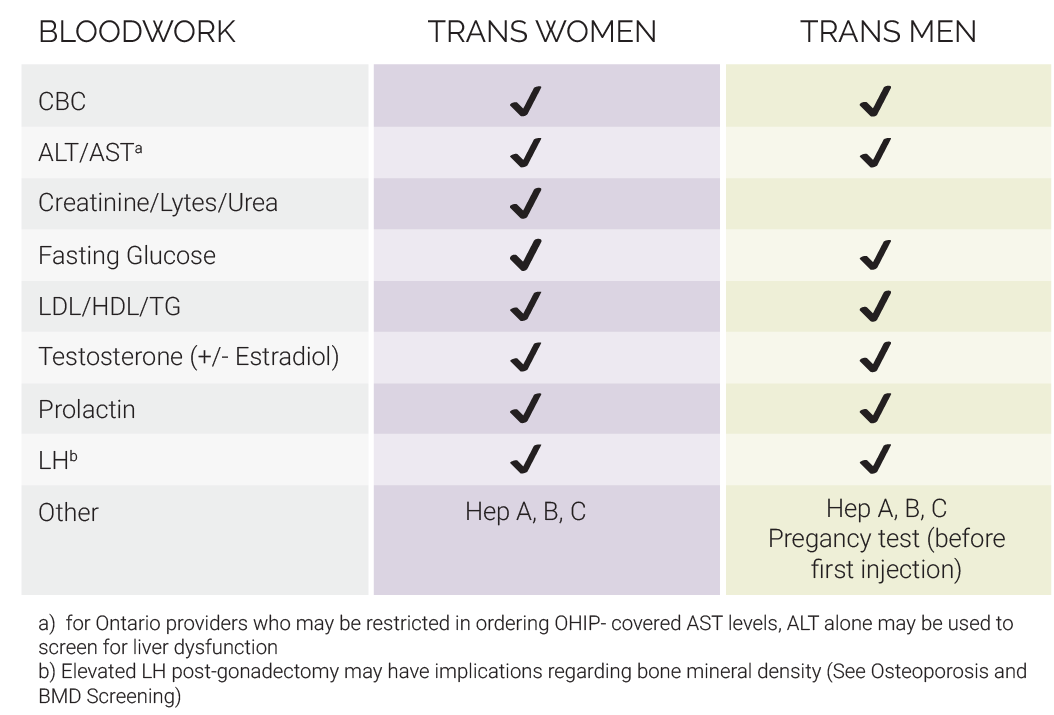 The following main causes are distinguished:
The following main causes are distinguished:
- Myocardial infarction is the most common cause of elevated AST levels in the blood. At the same time, AST, as a rule, is increased several times, while the level of ALT is slightly increased. Other symptoms of myocardial infarction: an attack of acute prolonged pain in the region of the heart, weakness, shortness of breath, dizziness, etc.
- Other heart diseases (myocarditis, rheumatic heart disease – inflammation of the heart in rheumatism), as well as conditions after a recent operation, are the cause of an increase in the level of AST in the blood.
- Liver diseases (viral hepatitis, alcoholic, drug, toxic hepatitis, liver cirrhosis, liver cancer, etc.) are often the cause of an increase in the blood level of both enzymes.
- Major injuries, burns.
- Acute and chronic pancreatitis.
Decreased levels of ALT and AST in the blood.
An excessive decrease in the level of ALT and AST in the blood is a serious condition and often indicates the presence of severe liver damage (cirrhosis, etc.



 2019
2019 11th ed. Philadelphia, PA: Wolters Kluwer; 2019: 57:844–865.
11th ed. Philadelphia, PA: Wolters Kluwer; 2019: 57:844–865. Normally, a small amount enters the bloodstream. Blood ALT testing is a common diagnostic test.
Normally, a small amount enters the bloodstream. Blood ALT testing is a common diagnostic test.
 There are many reasons for pathology. The main ones: smoking, hypertension, obesity, diabetes, sedentary lifestyle.
There are many reasons for pathology. The main ones: smoking, hypertension, obesity, diabetes, sedentary lifestyle. Aminotransferases have similar threshold levels in the blood. The diagnosis of a particular pathology depends on the balance of ALT and AST. The AST/ALT ratio is characterized by the de Rittis coefficient.
Aminotransferases have similar threshold levels in the blood. The diagnosis of a particular pathology depends on the balance of ALT and AST. The AST/ALT ratio is characterized by the de Rittis coefficient.
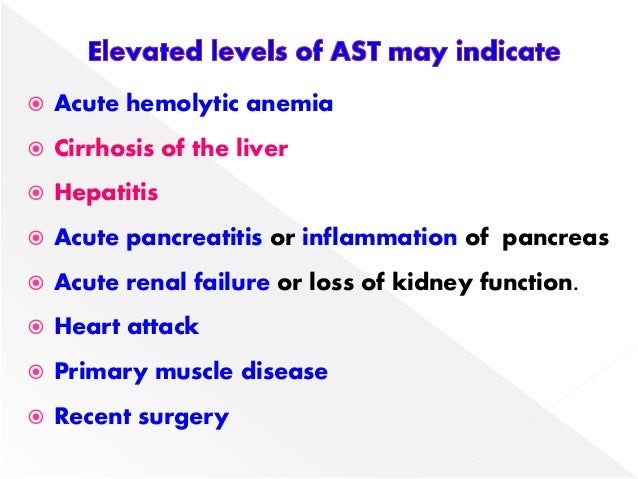
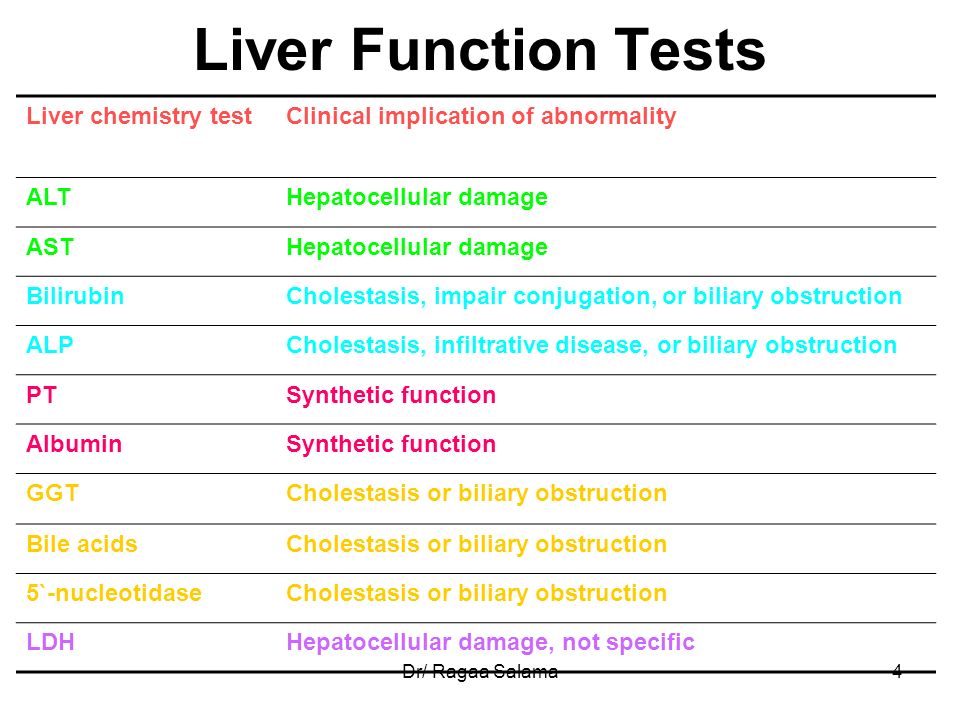
 One of the first enzymes that began to be determined for diagnostic purposes are ALT and AST. Now this study is gradually being replaced by tests for other enzymes in the blood, which are more specific to individual organs. But this analysis remains a good old classic and is still widely used today. So what is it – ALT and AST in a biochemical blood test? What do these indicators mean? What diseases can indicate?
One of the first enzymes that began to be determined for diagnostic purposes are ALT and AST. Now this study is gradually being replaced by tests for other enzymes in the blood, which are more specific to individual organs. But this analysis remains a good old classic and is still widely used today. So what is it – ALT and AST in a biochemical blood test? What do these indicators mean? What diseases can indicate? It is on this feature that the possibility of the diagnostic application of a biochemical blood test for enzymes is built.
It is on this feature that the possibility of the diagnostic application of a biochemical blood test for enzymes is built. This enzyme is found in the heart, liver, muscles and some other tissues. An increase in its activity may indicate when deciphering a blood test for the pathology of one of the above organs. AST values are most strongly elevated in heart diseases, in particular, in such a form of coronary artery disease as myocardial infarction.
This enzyme is found in the heart, liver, muscles and some other tissues. An increase in its activity may indicate when deciphering a blood test for the pathology of one of the above organs. AST values are most strongly elevated in heart diseases, in particular, in such a form of coronary artery disease as myocardial infarction. In addition, it, like the ECG, makes it possible to differentiate a heart attack from an attack of angina pectoris: indicators of AST activity with it are almost never elevated. Also, this analysis allows you to monitor the dynamics of recovery, to draw prognostic conclusions.
In addition, it, like the ECG, makes it possible to differentiate a heart attack from an attack of angina pectoris: indicators of AST activity with it are almost never elevated. Also, this analysis allows you to monitor the dynamics of recovery, to draw prognostic conclusions.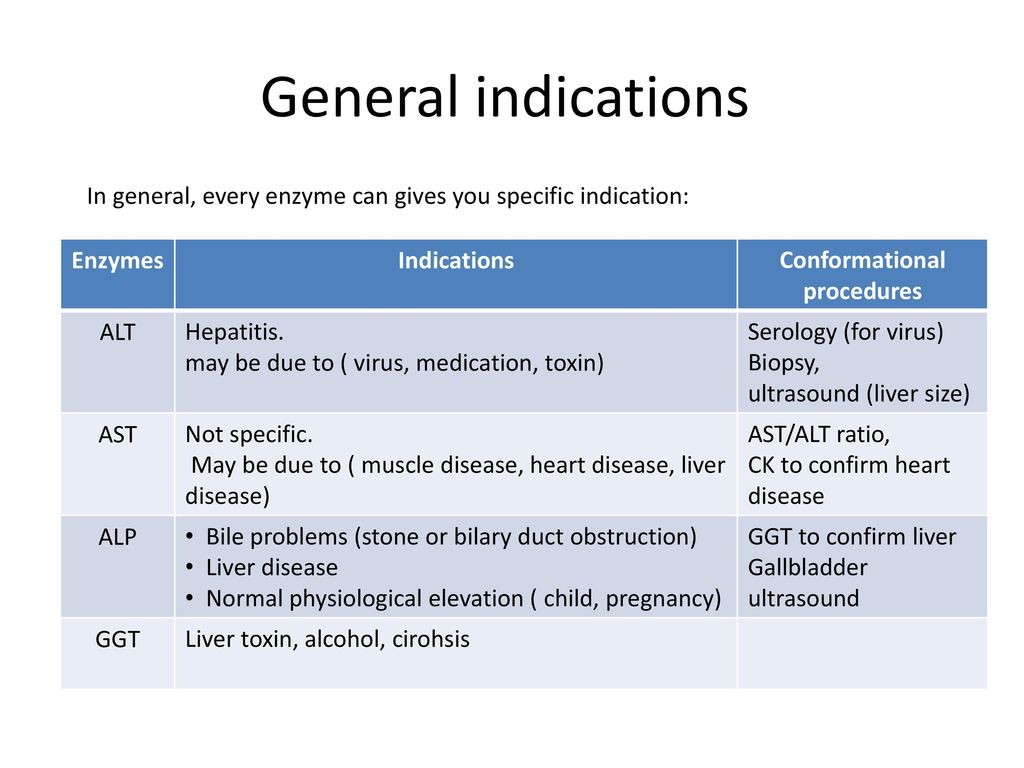 In the usual course, the indicator reaches a maximum at the 2-3rd week, and normalizes after 30-40 days. The prolongation of the period of increase in ALT activity indicates a chronic process and therefore is an unfavorable prognostic sign. If a new burst of enzyme activity is observed during the disease, this means that a relapse has occurred.
In the usual course, the indicator reaches a maximum at the 2-3rd week, and normalizes after 30-40 days. The prolongation of the period of increase in ALT activity indicates a chronic process and therefore is an unfavorable prognostic sign. If a new burst of enzyme activity is observed during the disease, this means that a relapse has occurred. The degree of damage to this organ in hemolytic disease in newborns reflects precisely the activity of ALT in the blood. Children with the highest ALT numbers are at greater risk of death.
The degree of damage to this organ in hemolytic disease in newborns reflects precisely the activity of ALT in the blood. Children with the highest ALT numbers are at greater risk of death. This applies not only to children, but also to adults.
This applies not only to children, but also to adults.


 ). A separate line of work for the company “Basic Relief” is the improvement and landscaping of the territories of educational institutions (kindergarten, lyceum, school, university, etc.).
). A separate line of work for the company “Basic Relief” is the improvement and landscaping of the territories of educational institutions (kindergarten, lyceum, school, university, etc.). They are counted by enzymatic activity. I will not describe how the calculation is going on, this is not necessary for us, ordinary people.
They are counted by enzymatic activity. I will not describe how the calculation is going on, this is not necessary for us, ordinary people.




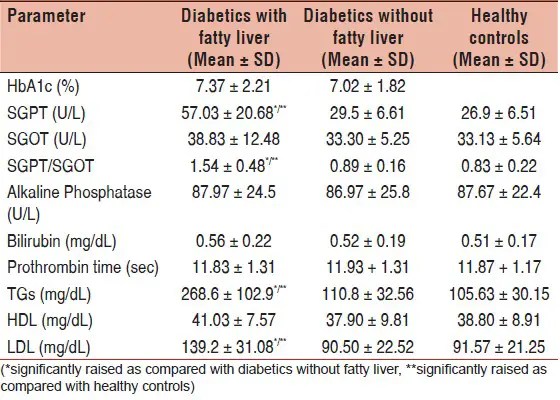 )
)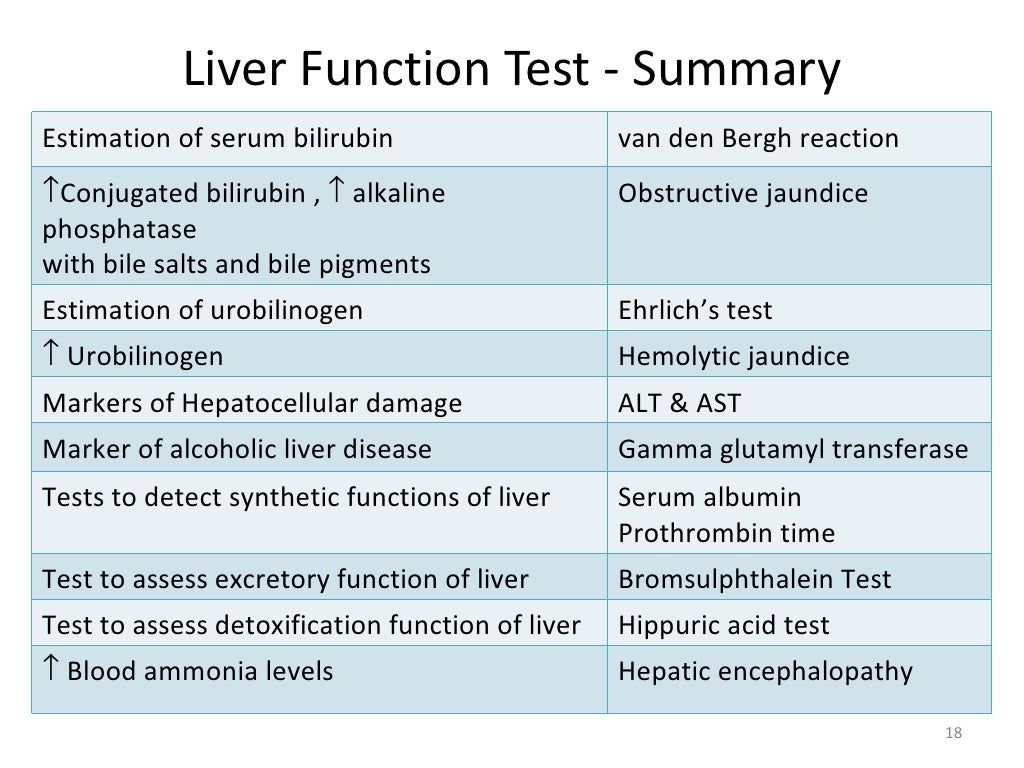 Other symptoms of myocardial infarction are: acute pain in the region of the heart, radiating to the left side of the body (left side of the neck, inner surface of the left arm, etc.), prolonged pain (lasting more than 30 minutes), shortness of breath, feeling of weakness, fear of death, dizziness, etc.
Other symptoms of myocardial infarction are: acute pain in the region of the heart, radiating to the left side of the body (left side of the neck, inner surface of the left arm, etc.), prolonged pain (lasting more than 30 minutes), shortness of breath, feeling of weakness, fear of death, dizziness, etc.